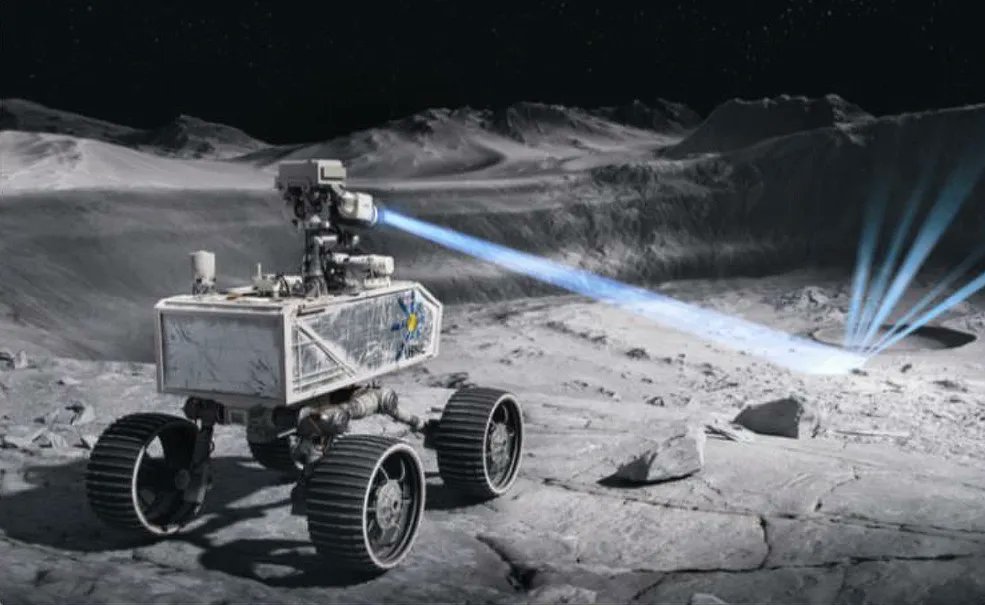Not all flashlights are created equal. Some are stronger, consume more power, or have features such as blinking or strobes. Some aren’t even meant for humans, such as a new project that recently received funding from a NASA Institute for Advanced Concepts (NIAC) Phase I award. Designed by the Ultra Safe Nuclear Corporation (USNC), this flashlight doesn’t emit visible light, but it does emit x-rays and gamma rays, and the researchers on the project think it could be useful for finding resources on the Moon.
The key to this technology is a novel radioisotope that USNC developed that goes by the trade name EmberCore. It is a type of nuclear chargeable ceramic, similar to the radioisotopes contained in the radioisotope thermal generators used by Mars rovers such as Curiosity and Perseverance. So the radioisotope itself can be used as a power source for a rover, but it has a distinct advantage over other RTG cores.
When shielded a specific way, EmberCore emits X and Gamma rays that can be directed to a particular location, much like a flashlight. Effectively, the rover’s power source could also power a high-intensity scanning beam. According to the press release provided by the company in association with the announcement of their Phase I award, the beam could travel many kilometers on an airless world.

Credit – USNC
As with many remote sensing applications, that beam would then at least partially reflect back towards a sensor mounted on the rover and can be analyzed to detect the material it was reflecting off of. But, X-rays have an additional feature that anyone who has seen a medical one would be familiar with – they can see what’s underneath an object’s surface. Gamma rays can do so as well.
That added advantage makes having a controllable x-ray/gamma-ray remote sensing platform that also serves as the power source of the rover carrying is an exciting innovation and precisely the kind of research that NIAC usually goes for. The outcome of this preliminary research would be a mission design to one of two places on the Moon.
First would be Shackleton Crater, which has long been thought to hold large amounts of water. Accessing that water would be vital to supporting any long-term human effort to live on the Moon. A remote sensing platform that could scan the crater’s surroundings for the most significant deposits on and under the surface would be invaluable for directing astronauts where to look.
Another location would be the famous Sea of Tranquility (Mare Tranquillitatis), where Apollo 11 first touched down on the Moon. It has plenty of exposed rock strata that could provide insights into the geological formation of the Moon. However, they are only accessible by dangerous terrain that would be difficult for any rover to traverse. Hitting them with an EmberCore flashlight would allow a rover to observe them remotely without making the tricky trek to get to them.
NIAC Phase I grants are a first step down a long road towards being used on a space mission. But USNC, which is based in Seattle and headed by a former Chief Scientist at Los Alamos National Laboratory, and its EmberCore technology are starting down that road with this concept, and it’s not the first one they’re doing. They were also funded by the US Military’s Defense Innovation Unit to research a nuclear propulsion engine for spacecraft, also based on the EmberCore engine. There might be plenty of more use cases for this novel innovation in space exploration in the future.
Learn More:
NASA / USNC – EmberCore Flashlight: Long Distance Lunar Characterization with Intense Passive X- and Gamma-ray Source
USNC – EmberCore
UT – Yes, There’s Water on the Moon
UT – Tiny Cubesat Will Shine an Infrared ‘Flashlight’ Into the Moon’s Shadowed Craters, Searching for Water Ice
Lead Image:
Artist’s depiction of a rover on the Moon with an EmberCore flashlight.
Credit – Christopher Morrison

